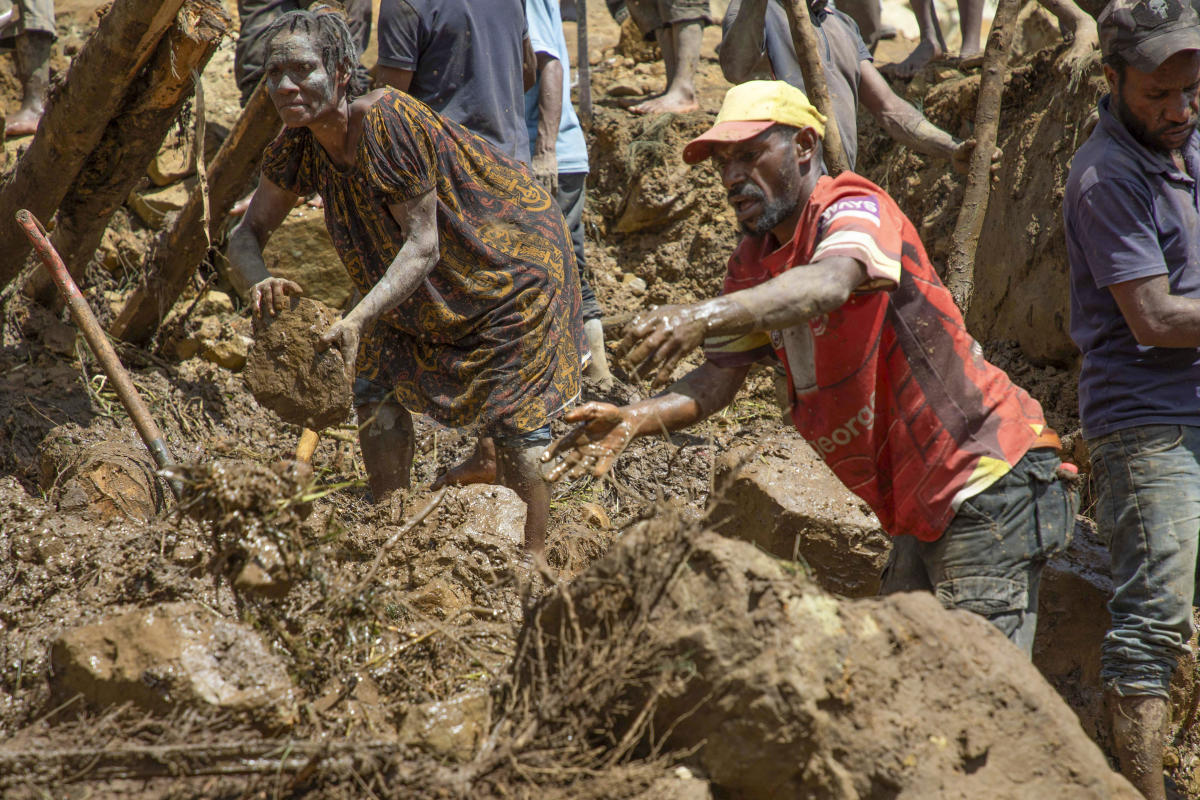MELBOURNE, Australia (AP) — Authorities fear a second landslide and a disease outbreak looms at the site of a mass casualty disaster in Papua New Guinea, due to floods and bodies trapped under tons of rubble sweeping over a village have been swept. an official said Tuesday.
A mass of boulders, dirt and splintered trees devastated Yambali in the South Pacific country’s remote highlands when a limestone mountainside slid away on Friday. The blanket of rubble has become more unstable due to recent rain and streams trapped between the ground and the rubble, said Serhan Aktoprak, chief of the International Organization for Migration’s mission in Papua New Guinea.
The UN agency has officials on the ground in Enga province helping to shelter 1,600 displaced people. The agency estimates that 670 villagers have died, while the Papua New Guinea government has told the United Nations it believes more than 2,000 people have been buried. Five bodies were recovered from the rubble on Monday.
“We are hearing suggestions that there could be another landslide and that perhaps 8,000 people would have to be evacuated,” Aktoprak told The Associated Press.
“This is a major concern. The movement of the land, the debris, creates a serious risk, and in total the total number of people who could be affected could reach 6,000 or more,” he said. This includes villagers whose source of clean drinking water has been buried and subsistence farmers who have lost their vegetable gardens.
“If this mass of rubble is not stopped, if it continues to move, it could gain speed and further wipe out other communities and villages further up the mountain,” Aktoprak said.
Scenes of villagers digging through muddy rubble with their bare hands in search of the remains of their relatives were also worrying.
“My biggest fear right now is that bodies will decay, water will flow and this will pose serious health risks related to infectious diseases,” Aktoprak said.
Aktoprak’s office raised these concerns on Tuesday during a virtual disaster management meeting of national and international aid workers.
The warning comes as geotechnical experts and heavy earth-moving equipment are expected to reach the site soon.
The government of Papua New Guinea officially asked the United Nations on Sunday for additional aid and to coordinate contributions from individual countries.
An Australian disaster response team was due to arrive in Papua New Guinea, Australia’s nearest neighbor, on Tuesday. It includes a geological hazard assessment team and drones to map the site.
“Their role will be in particular to help carry out geotechnical monitoring to determine the level of the landslide and the instability of the land there, and of course do some work to identify where the bodies are located,” the spokesperson said. Australian Emergency Management Minister Murray Watt to Australian Broadcasting Corp.
Australian Minister for the Pacific Pat Conroy said the government would also provide long-term logistical support for clearing debris, recovering bodies and supporting displaced people. The government announced an initial aid package of 2.5 million Australian dollars ($1.7 million).
“This is an incredibly inaccessible part of Papua New Guinea and it is a very challenging process for everyone involved,” Conroy said.
The earth-moving equipment used by Papua New Guinea’s military was expected to arrive soon, after traveling from the town of Lae, 400 kilometers (250 miles) to the east, said Justine McMahon, country director of the humanitarian organization CARE International .
The landslide buried a 200-meter stretch of the province’s main highway.
“One of the complicating factors was the destruction of parts of the road and the instability of the ground, but they have some confidence that they can move heavy equipment today,” McMahon said Tuesday.
An excavator donated by a local builder became the first piece of heavy earth-moving equipment deployed on Sunday to help villagers digging with shovels and farm implements to find bodies.
Papua New Guinea is a diverse developing country with 800 languages and 10 million people who are mainly subsistence farmers.
